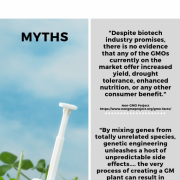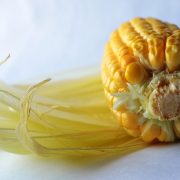Informational Interview with Dr. Susan McCarthy, USDA Knowledge Services Division (KSD)
By Matthew Fabian, Conviron Scholar
1. Please describe your path to a career in plant science, from undergraduate (or earlier) studies to your current role. What are some particular challenges, experiences, or milestones that you’d care to share?
After one course correction in my undergraduate college journey at the University of Michigan, I thought I wanted to go to Med School and needed to complete my undergraduate degree within what remained of the traditional four year course. After studying the various programs I found Botany – and thought I can do that. Once on board, I fell in love with plant physiology.
Graduate studies in plant physiology became my next destination. The University of Illinois had a graduate program in Plant Physiology – so there I went. It was some time later that I found I was the only student in the program that year. I’m not sure – but it may have been the last year the program was offered. It was an inter-departmental program. Dr. Rebeiz and his lab were in the program. His team focused on chlorophyll biosynthesis, an interesting and colorful blend of chemistry and biology.
After completing my doctoral program I wanted to stay connected with chloroplasts – I entered into a postdoctoral appointment at the University of Nebraska in Lincoln working with Dr. Steven Schwartzbach on Euglena. These studies were more physiological and biological – I learned techniques in protein and nucleic acid separation, including one and two-dimensional gel electrophoresis. After nearly three years in Nebraska I moved on to my final postdoctoral appointment with the U.S. Department of Agriculture, Agricultural Research Service in the regional lab in Peoria, Illinois. I worked in the photosynthesis group with a great group of researchers. I studied factors of chloroplast development under photoreceptor control with Ken Eskins, and with Paul Jursinic I discovered a second low-affinity atrazine binding site in Photosystem 2.
After nearly 9 years working as a postdoc, it was time to find permanent employment. As a member of the baby-boom generation that wasn’t an easy prospect. I had applied to plant physiology jobs in East Grand Forks, MN (North of Fargo) and was in a group of more than 200 applicants – they canceled the position and didn’t hire anyone. I applied for faculty positions at several small colleges with more than 400 applicants without success. Then, I saw an announcement for a Coordinator of the Biotechnology Information Center at the National Agricultural Library (NAL). This work offered me the opportunity to make use of my science background, to help people with their information needs and to work in a library! I was selected. Before starting I was asked to instead take on the Plant Genome Data and Information Center, which I led for nine years. It was a great opportunity to really learn about organizations, projects, leadership. I honed writing and presentation skills. I managed a newsletter for a number of years. I learned about data and databases — and the Internet. I trained many researchers on how to use E-mail in the early 1990’s. As time moved on the Plant Genome program in the Agricultural Research Service changed direction. I moved on to other positions working across the Library on wide-ranging topics such as invasive species, food safety, and animal welfare. I led a three-year long information study with the Nuclear Regulatory Commission looking at the re-use of soil. I served as the executive secretariat for a blue ribbon panel examining the management and programs of the National Agricultural Library. The Panel was chaired by Larry Vanderhoef one of my professors from the University of Illinois.
Eventually I became a Branch Chief for Strategic Programs where I led the information centers at the library until 2012 when NAL went through a re-organization which established the Knowledge Services Division. The Knowledge Services Division (KSD) is focused on research data and its management. It felt as though I had come full circle in my time at NAL as I stepped in to take the lead as the Associate Director for the division. Throughout my time at NAL I was involved with the start-up of a number of programs. KSD is the latest and most significant start-up project yet. Five years into this effort and I am still learning new skills: business and product management; acquisition strategy; partnership development; and leadership at a deep level.
2. What is your role and general responsibility at USDA KSD? How has your training in data science informed your overall career?
It is my role to establish the Knowledge Services Division with the help of the staff. This means defining the mission, vision, and values of the division. Understanding what our capacity is; how to examine opportunities and establishing the criteria we will use to evaluate these opportunities against our mission and capacity. Our division is all about research data and services supporting this data.
Good data management is really good science. It helps you to think through the organization of your data, making sure that you have adequately captured the methods you used both in the creation and analysis of the data. In collaborative work a good data management plan outlines everyone’s roles and responsibilities with the project; who has access to what data and when; how will the data be shared and where it will be deposited for public access. Answering these questions up front can actually help to reduce conflict at the end – when co-authorship is determined early, fewer questions are out there to stumble on. We have a page on our Web site with resources and tips for data management https://www.nal.usda.gov/ks.
3. Laboratory student researchers are increasingly aware of the value of data analysis and science. Do you have any insights for students that aim to increase their proficiency with data?
Data Science is the new hot field today. From what I understand about it the tools most useful are those programming/scripting languages which allow you to “extract/transform/load” (ETL) are helpful in manipulating data, including R, and Python. Understanding experimental design and a good grasp of statistics are powerful tools to have.
The other side of data science is story-telling; thinking about impact, knowing how to distill complex concepts into stories that can be easily understood by many. This is greatly helped with visualizations. Edward Tufte is the grandfather in the field. There are many places to gain knowledge and training. One quick tip is audience segmentation – look at questions across various audiences and then look within the audiences to see if they segment differently.
4. What should plant biology students know about the mission of USDA KSD?
I am always inspired by the foundational legislation establishing the department in 1862 (https://www.nal.usda.gov/act-establish-department-agriculture). All of the year books of agriculture are online – the early ones are very interesting. George Washington wanted to establish a department of agriculture – but couldn’t in his time in office. There were state-based agriculture societies which continued to advocate for a national department, making USDA truly the “people’s department”.
I share the vision of making the library into a working laboratory instead of a miscellaneous storehouse! Our mission has been consistent since the establishment of the Department, and it is to:
· Acquire – agricultural literature, ideas, data
· Provide Access – by describing; storing; organizing; and delivering
· Preserve – the most important information for the future
Many innovations have taken place. In the 19th century and earlier few people had books, newspapers were the most common means of sharing information. There were many small newspapers some even with agricultural foci. Then libraries became the next innovation and people could borrow materials from the libraries. This still was a one-to-one relationship. The next innovation was sharing copies of card catalogs between libraries – thereby facilitating interlibrary loans of materials. Next came photographs of articles – this now allowed one resource to be shared by a number of people at one time. Now of course in the digital age, it is technically much easier to share information – although possibly getting more complex from the intellectual property perspective.







